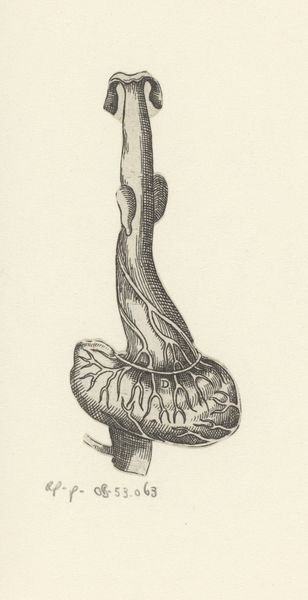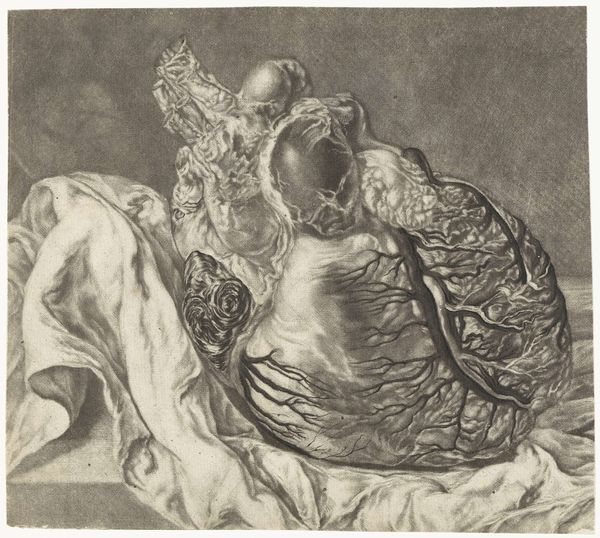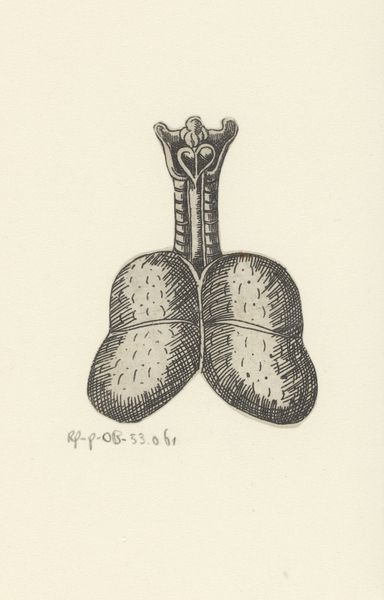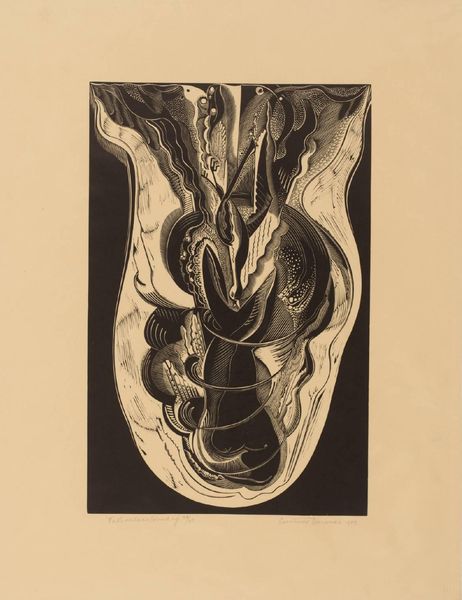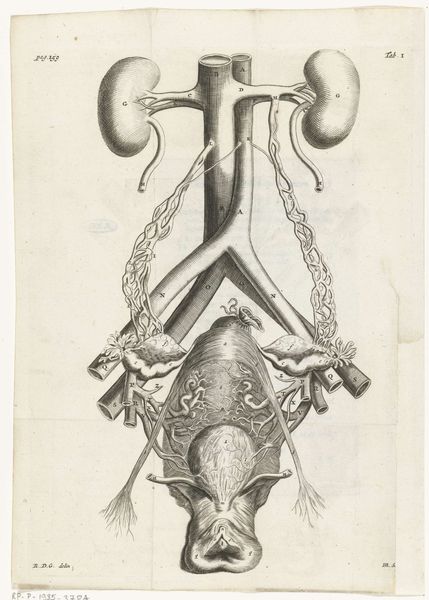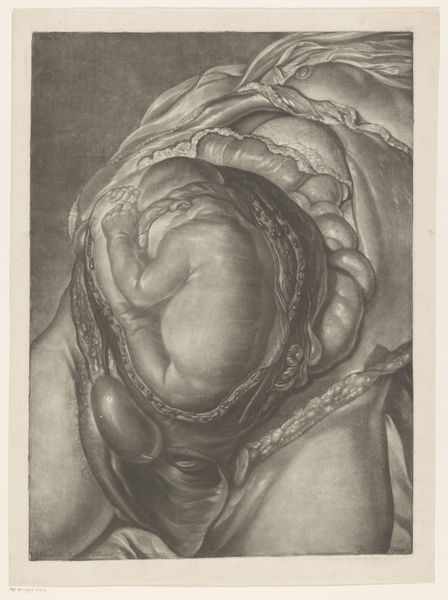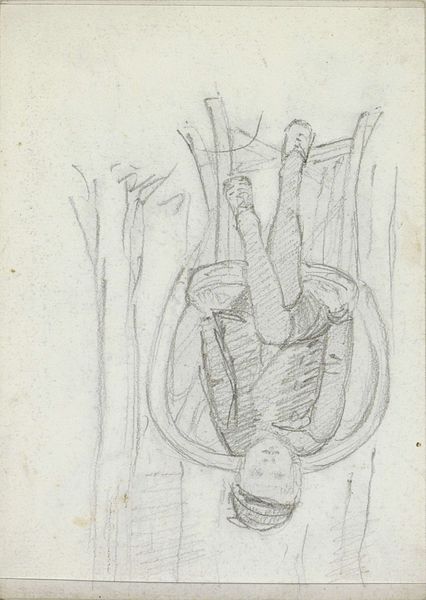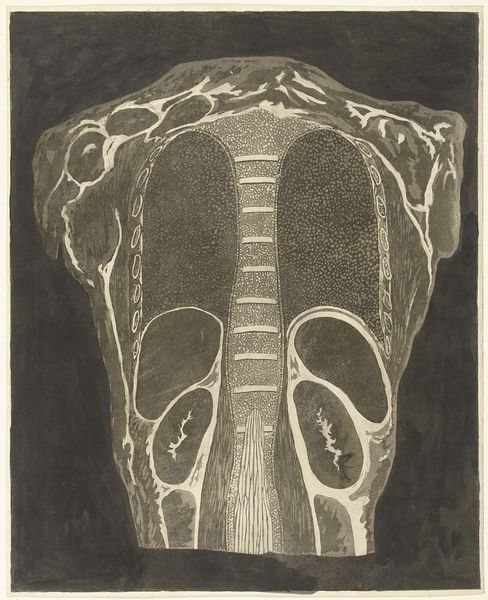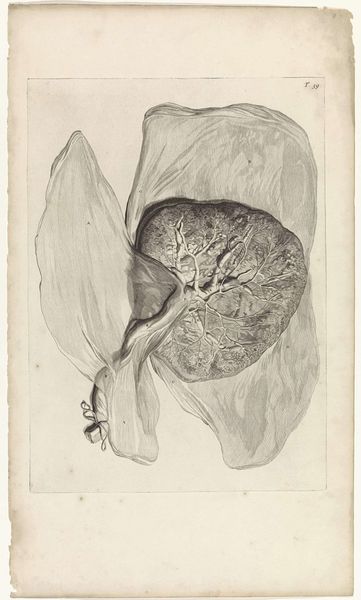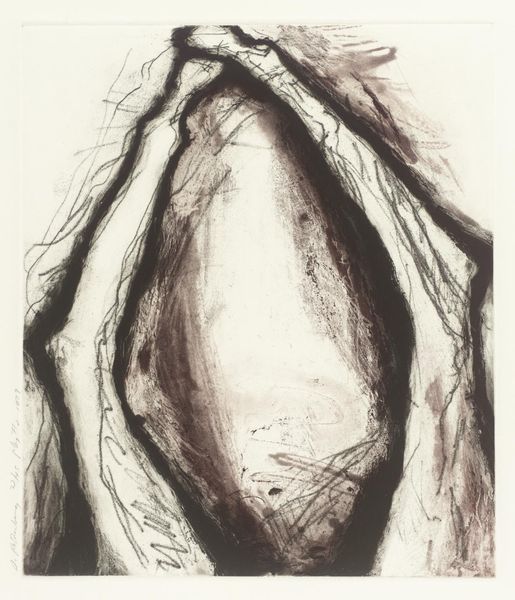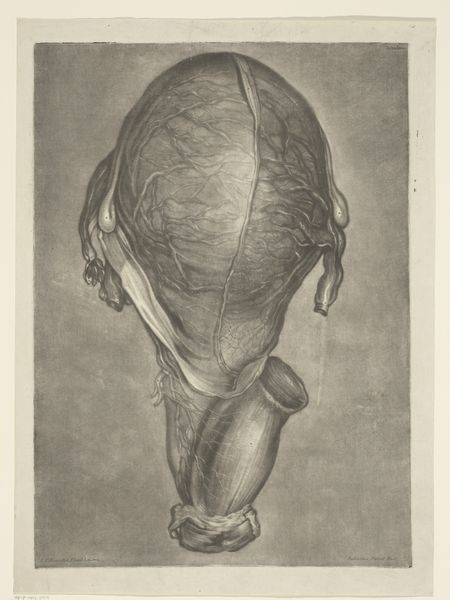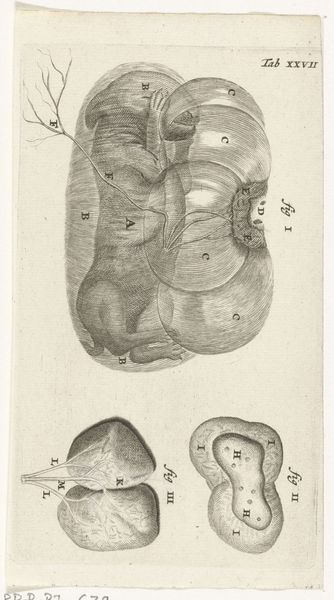
print, engraving
#
baroque
# print
#
pen illustration
#
pen sketch
#
figuration
#
engraving
#
erotic-art
Dimensions: height 83 mm, width 61 mm
Copyright: Rijks Museum: Open Domain
Curator: Standing before us is "Darmkanaal," or "Intestinal Tract," a piece attributed to Lucas Kilian, likely crafted sometime between 1589 and 1637. This Baroque print, using engraving techniques, offers a surprisingly intimate glimpse into the human body. What's your initial reaction? Editor: Visceral, to say the least. The starkness of the rendering, the almost aggressive unveiling of internal anatomy, speaks volumes about how the body was viewed - or perhaps more accurately, controlled - in that era. There’s a disturbing directness that I can’t shake off. Curator: Indeed. Consider how images of the body shifted during this time. Medieval representations, full of allegory, were giving way to a nascent scientific observation. There's a striking convergence, or perhaps conflict, between symbol and science here. Look closely at the "H" marked within the organ, could this relate to humoural theory, associating certain organs with temperaments? Editor: It is that 'H' that fascinates me, since there seems to be little context or clues surrounding it, this invites me to ask where we, as the observers are positioned? Do we find it empowering, perhaps even cathartic to possess this detailed internal knowledge? Or are we reinforcing the objectification inherent in dissecting the vulnerable and exposed? Curator: An important question, how is the image positioned in cultural narratives around medicine, knowledge and display? But this era was obsessed with visual rhetoric, with revealing truths—or creating illusions. What is real in this image, what is symbolic? How do these lines blur? Editor: Exactly. How much of our interpretation is shaped by our current cultural understanding of medicine? It raises pertinent questions about the legacy of art and science; for whose gaze, and at what cost? Does such explicit, even violent visual representation challenge established powers, or further inscribe the unequal power dynamics embedded within social discourse? Curator: And to take it further, by looking at this stark and unromantic rendering, one could easily imagine how this image was consumed by different audiences at the time; what cultural narratives might be associated here with sexuality, social mobility, medicine, education? Editor: Reflecting on 'Darmkanaal', I can't help but see it as a microcosm of historical and present day power structures around access and the authority associated with knowledge of anatomy. It underscores that viewing practices are never neutral. Curator: I concur, seeing this image as a site of ever-evolving interpretation is how these centuries old lines remain relevant today. Thanks to anatomical accuracy mixed with allegory it leaves the viewer with lingering questions to consider around body, history and meaning.
Comments
No comments
Be the first to comment and join the conversation on the ultimate creative platform.
